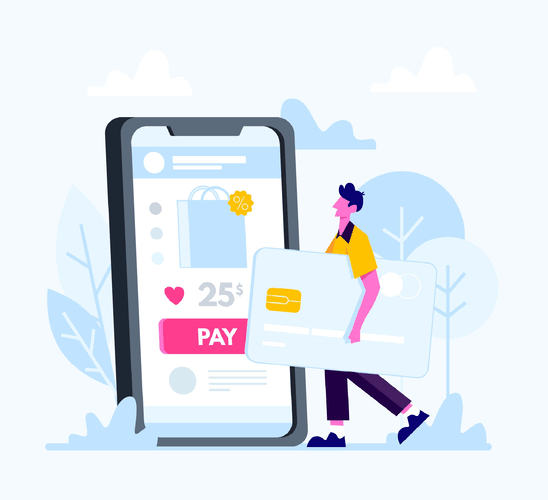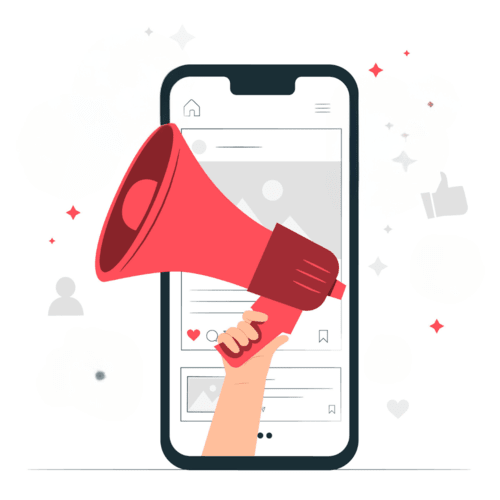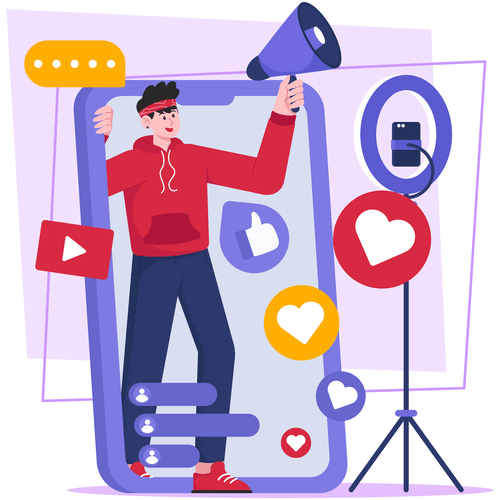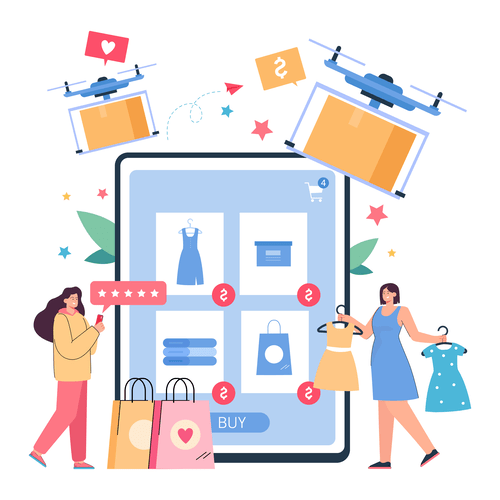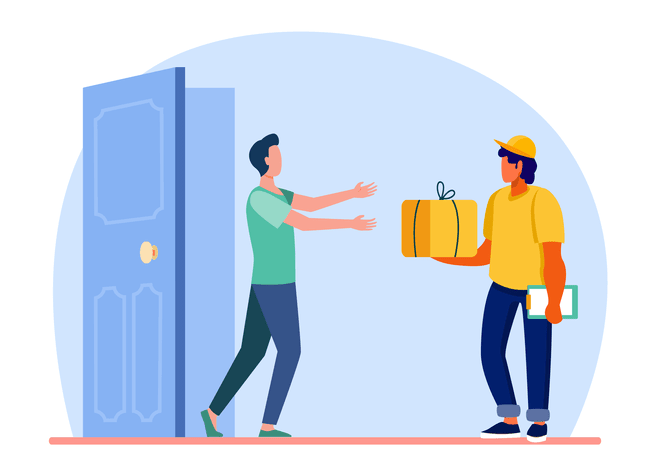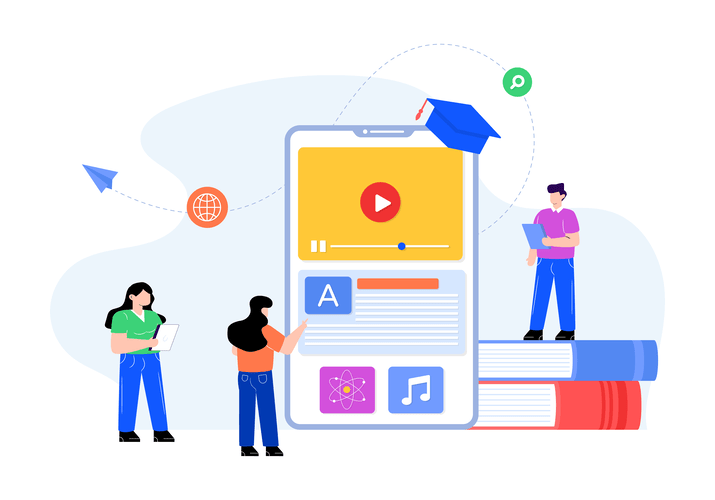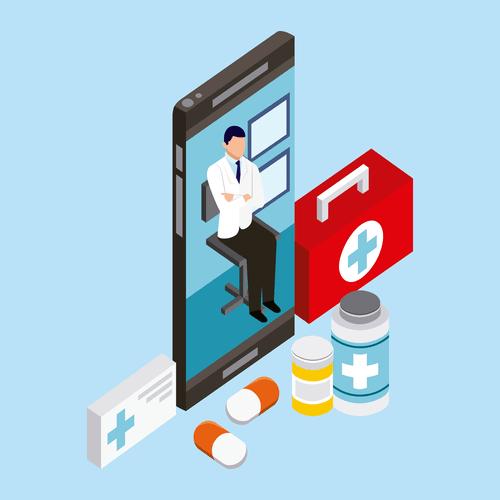Extra revenue! These two words arguably release more dopamine in an entrepreneur's head compared to going on a month-long vacation! In this blog, we will explore the plethora of different monetization strategies for apps that support higher revenue, along with app enhancements you should implement based on your business’s current state and use cases.
It’s amazing to think how 97% of applications available on the internet are free to access, but still, the revenue of the application market is set to touch a staggering US$ 522 Billion worldwide by 2024 (Statista, 2024), courtesy – monetization strategies for apps. If you’re someone who is shaping up your vision to build an application for your business goals, this blog is going to help you sort out the methods you will inevitably need to generate revenue from the application once it is ready.
We will discuss what plans work, the ones that might have a backlash, the level of aggressiveness you need to show while implementing these strategies depending on niche situations, and much more. Heck, if you already have an application and are looking to optimize your monetization strategy, we have a little something for you as well. So, let’s start the discussion, shall we?
Points to Consider Before Devising a Monetization Strategy
Depending on the state of your application, the monetization strategy can largely vary. There are majorly two situations, first, when you’re still working on launching your product into the market, and second, when your product is already up and running with a sizable user base. Both situations have their own pros and cons, let’s discuss them one by one –
If Launching a New App
The fact that your to-be users have no preconceived notions about your application, works in your favor. Allowing you to shape your monetization strategy without worrying about how the users will respond to a changed/new strategy –

[a] User Value
Fairly obvious, make sure the users are paying for something that adds value to their experience, making the purchase justifiable on their end. It can be anything from a higher threshold to token-based operations, or priority customer service, or even a dedicated badge for them in gratitude.

[b] Target Audience
Before finalizing your monetization strategy, take a moment to understand how your average users will react to different monetization strategies. While some users might not mind you running advertisements on the application in return for availing the service for free, others will find it annoying and look for options to get past that.
The best way to deal with this situation even before having a user base is to create an ideal customer profile (ICP) and compare it to the user behavior data available online. This will help you understand the things you need to keep an eye out for, and then plan accordingly.

[c] Competitor Pricing
You should also keep an eye out for the pricing your competitors are offering for premium features identical to yours. However, make sure you do not focus on providing just a cheaper markup than them; this will just set you up for a race to the bottom, nothing more.
Instead, try adding features that add more value to the users, and have proper IP rights, minimizing the opportunities for your competitors to replicate the USPs you are promoting your application with.

[d] Application Category
Some categories like – business optimization, personal finance, and investments are typically used by working professionals or other high-value users, so the monetization strategies here can be drafted in a more focussed manner with a slightly higher “price-to-value” markup, obviously given you are including the right value along with it.
On the flip side, if your application is in a category like entertainment, education, or lifestyle, it is used by a wider audience, which means everyone might not have the same purchasing power. In this case, you might wanna go for a more spread-out monetization model.
If Monetizing a Previously Free App
This is a slightly complicated situation, because unlike the previous category, here you need to consider the way your existing customers are going to adapt to the change in your application’s pricing architecture.

[A] Change in User Experience
If your users are habituated to a purely free application, you should always prioritize implementing monetization without hindering their experience to a point that they start to notice.
Even if you have no other option, and you need to push in certain changes that will inevitably be a hindrance, you should do it gradually over time, instead of flooding everything on the users at once. This somewhat mitigates the risk of them abandoning your services.
A good example of this gradual adaptation is what YouTube did with its advertisements. You’ve most likely noticed how they increased the advertisements over time, but they did it in such a long span that some users kinda got used to it, and the others were convinced to subscribe to the premium version of the app. But no one really abandoned the platform.

[B] Impact of the Change
If not done correctly, the users may complain about your application, sharing their experience on forums, or in the testimonial section of your marketplace listing, which might impact your growth in the long run, reducing the number of new users by a noticeable percentage.

[C] Add New Features Instead of Taking Old Ones Away
The best approach in this situation is to stack additional “premium features” on top of the pre-existing offerings without disturbing them too much. But make sure that you add an extra incentive for the pre-monetization users for their loyalty as well.
Otherwise, they might perceive the new setup to be pushing them down the priority list, which again, might leave a bad impression.

[D] Balance Sheet Vs Company Reputation
While profits are important and you might have targets assigned to you by the investors/stakeholders, it is never a good idea to accomplish them at the cost of your brand reputation. As discussed, that may interrupt the flow of new users, making it difficult for you to sustain consistent growth. Pushing you down a rabbit hole of implementing the monetization strategies more and more aggressively.
Top 30 Monetization Strategies For Apps Based on Their Categories
With the – “right way to implement these changes covered”, it is time to discuss – “how can they be implemented?”. Spoiler alert: there are many! Mostly classified based on the type of verticals your application covers. While some popular applications like Facebook, WeChat and others covering multiple categories mentioned below, other apps like Twitch focus on one point primarily.
The best approach for you will be to go through all of the categories and decide which of the following are relevant to your business. Starting things off with –
Paid Applications
This is the most basic monetization model where the users have to pay a fixed amount before they can access the application –

[1] Downloading Fees
The developers basically charge a certain amount and in return provide the consumers with a copy of the application, which they can use in perpetuity.
In-App Advertisements
These are basically the advertisements you see at random places on an application’s UI. These banners highlight the offerings of the application you’re using, however, the main revenue comes from showcasing adverts for other applications and getting paid for them. These advertisements can appear in many ways, including –
[2] Transitional Ads
These ads typically pop up in between the transition screens of the applications. In between chapters or tutorial videos for educational apps, or in between game levels. Some mobile applications trigger these ads when a user changes to a different app and then comes back.

[3] Banners or Pop Ups
Banners are randomly placed on the UI with an attractive color scheme, minimal text and a call-to-action button. It is difficult to place these on smaller screens as the visibility to page coverage is a challenge to balance. This is where some apps implement a more aggressive way of advertising, called pop-ups. Where the application is flashed on the screen and the users have to acknowledge it(either check their services, or close the popup) before moving forward.
Some apps go as far as hiding the close button as much as possible or confusing the users with multiple close options. This can be extremely annoying for the users, building up a negative reputation, so it is advised to avoid implementing these if possible.

[4] Native Advertisements
These ads are subtle and often hard to differentiate from the main content of the page. These ads are typically used by the application for self-promotion, talking about other aspects of the application they can check out, or trying to get them to a screen that is further towards the end in the user journey.

[5] Rewarded Ads
The most well-known example of this would be – the 30 minutes of uninterrupted music Spotify offers in exchange for you listening to an advertisement. The users are basically agreeing to go through an advertisement and in exchange, they get to experience the premium features for a while. These ads have many similar iterations, mostly observed in video games.

[6] Interactive/Gamified Ads
This is a popular advertising strategy that has become popular in the recent years where users are given the opportunity to try out a short demo of the application in the advertisement itself.
This method is typically used by video game advertisements, where they allow the users to try a level with the intent of engaging them with the application. And, if they want to keep playing – they are prompted to download the application.
In-App Purchases/ Microtransactions
These are basically optional purchases made to add additional features or to enhance the user experience. Them being optional means that it does not interrupt the main user journey and only support in enhancing the user experience –
[7] Consumable In-App Purchase
Think of these as digital tokens that you can buy within an app over and over again. Some common examples of these can be:
- In-game currency, loot boxes, power-ups for many video games, and tokens to contact direct owners skipping brokers in a rental application.
- Additional words to scan through in a proofreading or plagiarism-checking application.

[8] Non-Consumables/One time In-App Purchase
You can offer permanent access to some sections of your application with a one time purchase, these app enhancements have a lifetime impact on the application. Some examples include:
- Buying a specific course from a learning platform like Coursera.
- Purchasing a DLC pack for a video game.
- Buying a new song or album on Apple Music.

[9] Renewable Tiered Subscriptions for Freemium Apps
The type of apps typically include a free version with minimum features and limited content and the premium content is gated behind subscriptions that can be purchased by the users for a limited time period. A major chunk of software products follow this model as it creates a recurring income stream for the business. Some examples include :
- Entertainment apps like Netflix, Disney+, Amazon Prime – they offer multi-tiered subscription models that can be purchased for 1 to 12 months.
- Business apps like Slack, Salesforce and Trello also provide similar subscription models that can be bought by entrepreneurs to boost the efficiency of their team.

[10] Seasonal Discount Offers
Black Friday, Christmas Month, Labor Day are some of the common annual occasions when businesses offer users premium subscriptions at a discounted price. While the profit margins are slim these times, the main intent is to grab an audience that becomes a regular on the app, which can then be used to monetize the other topics being discussed.
Brand/Influencer Focused Revenue Streams
A major chunk of consumers are aspirational, which means they look up to living an enhanced life, associating it with celebrity lifestyles and branded products. So it is common that users will trust an application more, if a popular brand or a well known celebrity/influencer is endorsing it. Many businesses use this fact to monetize their applications –

[11] Sponsored In-App Events
Applications collaborate with different brands to provide special offers and highlight their products from time to time, boosting their revenue and getting a cut for it. Most commonly observed with e-commerce, last-mile delivery applications, where there are weekly/day-to-day offers for certain brands.

[12] Premium Users Only Content
Streaming platforms like YouTube and Twitch are free platforms in general. But they provide special purchasable memberships to users that allow their messages to be highlighted whenever their favorite celebrity comes live, or even have a member-exclusive stream where some exclusive content is featured. The platform takes a cut from these subscriptions and pays the remaining amount to the influencer(s).

[13] Live Streams and Donations
Apart from the premium subscription users, application owners can monetize from the free owners as well by running ads and allowing them to send pop-up text-to-speech messages to the streamers in exchange for a certain amount of donation. The application again takes a cut here and gives the remaining amount to the influencers.

[14] Brand Collaborations
Even non e-commerce platforms collaborate with other brands in order to promote their applications and vice-versa. In this situation, brands either pay to promote their product on their partner or sign a mutual promotion agreement, making it a win-win situation for both parties. However, one very important thing which is also kind of a no-brainer – you must not promote a business that is your direct competitor in this scenario.

[15] Selling Merchandise
The influencers and brands often release exclusive merchandise for their users that typically sells for a slightly higher price than any standard retail product. The viewers however, do not mind these prices, as they find a sense of relevancy and representation of their preferred influencer/brand. Applications host these promotions on their own platform sometimes, barring other ecommerce platforms like Shopify and others from skimming some of their profits.
Ecommerce Apps Monetization Opportunities
Since we have mentioned e-commerce a few times already, let us discuss their application monetization strategies in depth –

[16] Commision From Companies for Visibility
Just like Google’s search engine result page (SERP), e-commerce platforms also have a search result page where they showcase all of their featured products based on your search term.
And similar to how you pay Google for running your ads so that your product is displayed on top of the search results for a specific keyword, the brands can pay the e-commerce application to feature their products up top as well for a certain product.

[17] Commision From Brands on Sale
This is the most common and obvious revenue stream for e-com applications, here, the application takes a commission for every product that a brand sells using its platform. The brands pay them because these aggregate sites give the brands an opportunity to showcase their products to a larger audience.

[18] Premium User Benefits
Coming back to the users, e-commerce platforms also provide a premium subscription to users that provides them with additional discounts on products and early access to popular sales, that mitigates the risk of their favorite products from being out of stock.

[19] Loyalty Incentives to Users
Some e-commerce platforms offer users in-app rewards that can be redeemed using tokens that are earned by making purchases over time. These in-app rewards include vouchers, discount coupons, free subscriptions to other platforms, etc. This is an indirect way of monetization, as it inspires the buyers to spend more on your platform.
On Demand Ecommerce/Last-Mile Delivery App Strategies
Gaining popularity in the last few years, last-mile delivery apps have disrupted the distribution of FMCG products, and the monetization strategies for these applications are versatile and similar to the e-commerce section for the most part. However, the delivery model has some intricacies that can be discussed in depth –

[20] Distance-Based Delivery Fees
Apps that deliver food, regular household products, and medications can charge the users for delivery based on the distance the delivery agent needs to travel. A small cut from this charge is kept by the application and the rest is provided to the delivery driver.

[21] Load-Based Delivery Fees
Similar to the distance factor we discussed in the previous point, the load of the product can also determine the delivery cost, as heavier objects cannot be delivered using any mode of transportation. The last-mile delivery apps sometimes decide to pool multiple products together to make the prices more reasonable for the customer along with making the delivery process more sustainable.

[22] Handling Fees
In case a fragile object needs to be delivered, in this case as well – the application can charge a higher fee as the product will require additional care while being delivered along with special packaging.

[23] Priority Delivery Fees
If the users want their product to be delivered in a shorter time span than the regular delivery time, they can opt for a priority delivery at an additional cost.

[24] Surge Time Fees
When the demand for delivery agents is high, the users are charged an additional amount on top of the normal delivery fee.
Educational App Monetization Strategies
While we have discussed accessing courses and exclusive content in prior points, educational apps still have some additional monetization opportunities that we can discuss –

[25] Access to Additional Questionnaires
Users, specifically students in this scenario, typically appreciate any opportunity to practice their syllabus after finishing their course before examinations. This is where learning apps like to monetize by pay-gating bonus questionnaires that can be purchased if the student desires.

[26] On Demand Doubt Clearing Sessions
Sometimes a student might feel perplexed about a certain section of an online course and could be unable to decipher the contents. In that case, they can opt for a doubt-clearing session with one of the course guides in exchange for a small compensation.
Medical App Monetization Strategies
Medical industry is experiencing a significant shift in recent times, where patients and doctors are able to connect via mobile applications and discuss back and forth instead of going through the tedious process of booking an appointment, visiting, and then getting an opportunity to discuss their issues.

[27] On Demand Consultations with Doctors
Similar to the on-demand doubt-clearing classes, medical apps can also book remote sessions with doctors on demand of a patient by creating a mapping algorithm that matches the doctor with the right expertise to the issue the patient is looking for assistance with.

[28] Sample Collection / Home Testing Services
For prescribed medical tests, the patients will have the option to submit their samples without the need to leave their homes. A representative can visit their doorstep to pick up and deliver their sample at a predetermined cost while following appropriate medical guidelines.
Monetize on the Data Your Application has Gathered
One of the more complicated and indirect ways of monetizing your application, here the data curated from the users is leveraged to generate some additional revenue. However, it is crucial to make sure the data being traded is truly anonymized and compliant with all the relevant data protection laws. With all of these things taken care of, here are the ways to leverage the recorded data of your application –

[29] Providing Anonymized Data to Other Organizations
Market research firms and institutions can be your largest customers, where your curated data can be of great value to them.

[30] Targeted Advertisements
Use the anonymized data to run the application’s advertisements optimally, maximizing the chances of a conversion, which helps boost the overall revenue of your business.
Conclusion
Now that we have covered most of the application monetization strategies, it is time to take things to the second gear, that is… You deciding the roster of your mobile app’s monetization strategies.
Bonus Tip: If you are also looking for a mobile application developer proficient with actually building an application around your curated strategies, you can touch base with us with absolutely no strings attached. Our team of experts will shape your imagination into an actual functioning solution that will play a major role in your company’s growth in the coming time period.
Get Complementary App Development Consultation!



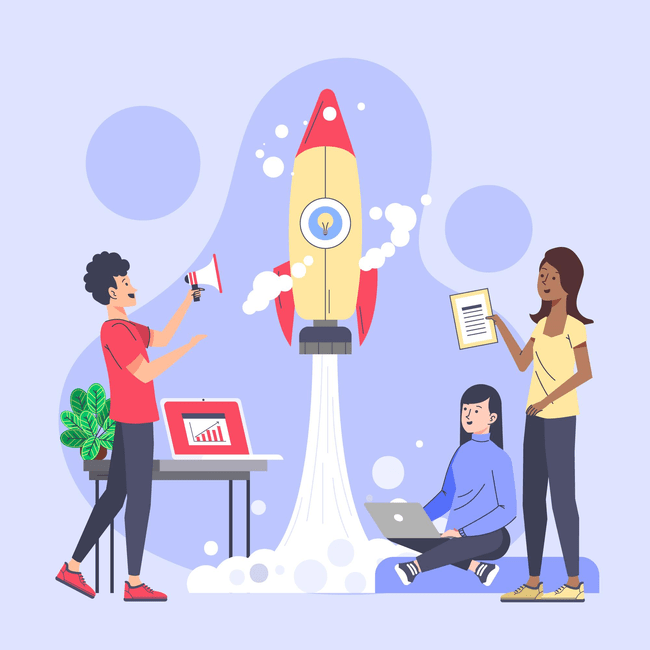
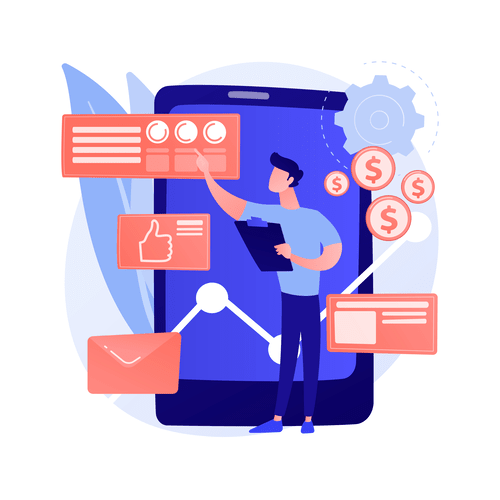
.png)
.png)
